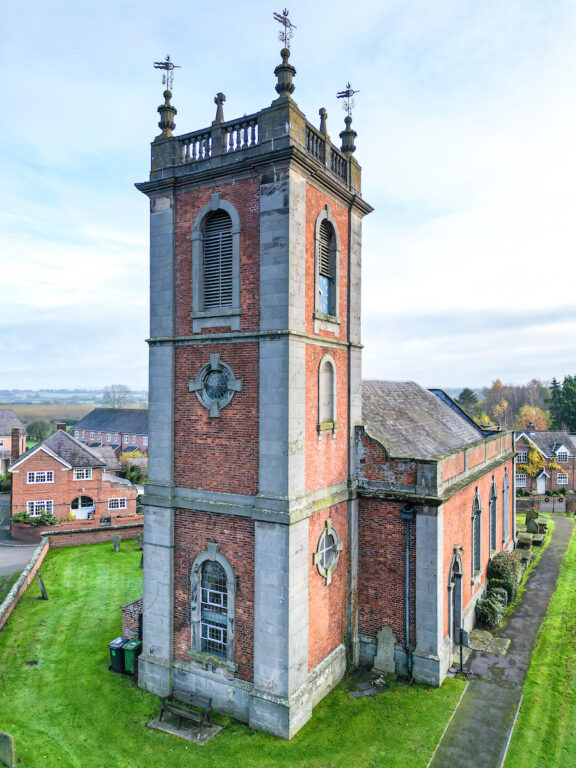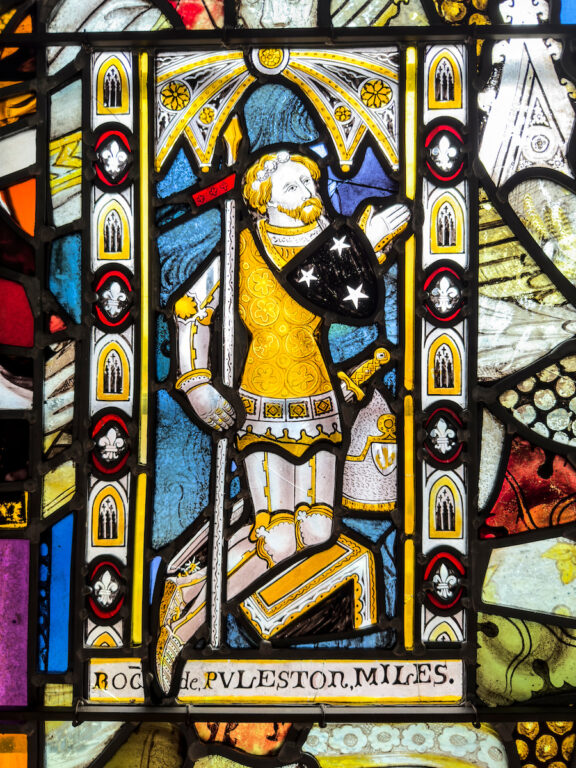
Church Road
Worthenbury
Wrexham
LL13 0AW
Closed for repairs
OS grid reference
SJ 418 462
what3words
headliner.scorch.heightThe churchyard remains in the ownership of the Local Ministry Area.
The interior is a sumptuous arrangement of decorative plasterwork, stained glass, and a complete set of 18th-century box pews.
St Deiniol’s was constructed between 1736 and 1739 to the designs of architect Richard Trubshaw. The new building cost £810 and was financed by the ancient, local Puleston family of Emral Hall.
A church is believed to have stood on this site since Celtic times, originally serving as a chapelry of the great 6th-century monastery at Bangor-is-y-coed. This early structure, or a version of it, was replaced in 1557 with a brick and timber church, which was later succeeded by the present Georgian building.
The current church is a traditional red brick construction, notable for the precision of its brickwork on the main elevations and tower. Dressed Cefn-Mawr sandstone is used for the quoins and window heads. Architecturally, it features a semi-circular apse at the east end and a three-storey tower to the west. The roofs are slate, and external ornamentation is restrained — limited to balustrading on the tower and part of the apse parapets. The tower is crowned with urn-shaped pinnacles at each corner.
In contrast to the simplicity of the exterior, the interior is richly decorated. The nave ceilings are plainly plastered but framed with a deep, moulded cornice. The chancel ceiling is far more elaborate, adorned with Rococo plaster flourishes, a golden sunburst, a dove, and whimsical clouds.
The east window is particularly striking: a vibrant kaleidoscope of colour composed largely of medieval glass from the 1393 Jesse window at Winchester College Chapel. This window, crafted by the aptly named Thomas Glazier and gifted by William of Wykeham, was dismantled in the 19th century, with fragments sold off. Some of the original 14th-century glazing remains at Winchester and is now housed in the Thurburn Chantry west window.
St Deiniol’s retains its original 18th-century box pews, complete with painted family crests and brass nameplates of local gentry. A grand triple-decker pulpit dominates the nave, while the wooden west gallery — supported by cast iron columns — features a large painted royal coat of arms. Also at the west end stands the original font, consisting of a small marble bowl atop a stone baluster stem.
The church was consecrated by the Bishop of Chester on Palm Sunday in 1739. Today, the Royal Commission regards St Deiniol’s as “an exceptionally fine Georgian church with a remarkably complete set of interior fixtures and fittings, being one of the finest examples of its kind in the country.”




Become a Friend
Receive our printed magazine — exclusive to members — and help us rescue more closed, historically important churches.